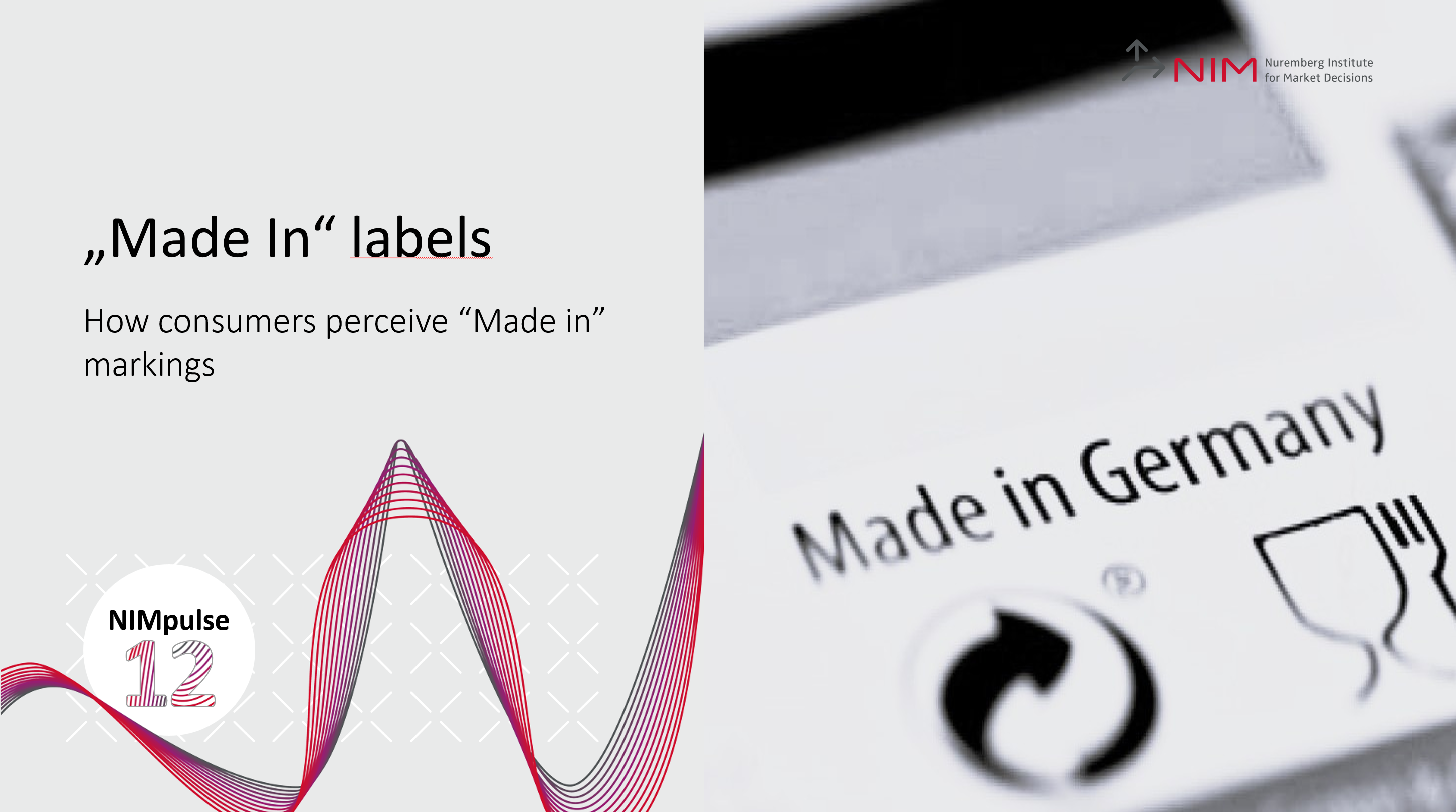Study
Unfried, M., & Ritter, F. (2025). „Made In“-Labels: How consumers perceive “Made in” markings. NIMpulse 12
"Made in"-Labels
Information about origin, such as “Made in Germany” or “Made in China,” can be found on countless products—from clothing and electronics to cars. But what do consumers worldwide associate with these labels? Is it just about geographical origin, or do certain ideas about quality, safety, or sustainability also come into play? And how much do origin labels actually influence trust in a brand or purchasing decisions?
This study examined the attitudes of people in different countries toward so-called “Made in” labels. The focus was on general aspects such as trust and purchase intention, as well as differences depending on product category. In addition, the study investigated how the term “Made in” is understood in the first place and what characteristics consumers associate with different countries of origin. The results provide insights into a topic that is as relevant for international brand strategies as it is for consumer perception in global competition.
What do consumers expect from “Made in”?
The most important criteria for consumers when purchasing a product are quality and price. In third place, they cite maintenance and care of a product.
In contrast, the country in which the product was manufactured or where the manufacturer is based plays only a minor role.
Most consumers believe that the “Made in” label stands for final assembly and quality control. However, in order to comply with the “Made in” label, a product does not have to be consumed or sold in the corresponding country.
Which “Made in” labels are trusted, which are noticed, and which motivate people to buy?
“Made in China” is by far the most frequently perceived label by respondents in everyday life, followed some distance behind by the USA and Japan. “Made in Germany” ranks fourth in the ranking, making it the highest-ranked European country. The “Made in Mexico” and “Made in Switzerland” labels, on the other hand, are very rarely perceived.
On average, most consumers believe that German and Swiss manufacturers use the “Made in” label according to their own standards. They have little confidence in the “Made in” labels from Taiwan, China, Mexico, and South Africa.
Similarly, the “Made in Germany” and “Made in Switzerland” labels have the most positive effect on purchasing decisions. “Made in China” and “Made in India,” on the other hand, would only positively influence the purchasing decisions of around a quarter of those surveyed.
What do consumers associate with the various “Made in” labels?
People mainly associate “Made in” labels with certain product categories, with some labels standing out for one or two products in particular (see “Made in Germany” and cars, or Switzerland and watches/chocolate), while others represent many products. Brands such as BMW or Apple are rarely mentioned.
It is also striking that most labels hardly evoke any negative associations. Even labels that are not generally considered positive (such as German respondents for “Made in the USA”) are rated as ‘good’ in the worst case. The exceptions here are the labels of the emerging markets India, Mexico, Taiwan, and China. Here, “poor quality” and “cheap” dominate the associations.
How do the various “Made in” labels perform in specific product categories?
When consumers are asked to rate “Made in” labels for specific product categories, it is striking that “Made in the USA” performs particularly well here, always finishing in the top 3 except for one category. Japan impresses with technical products and Germany with household appliances and cars.
“Made in China” makes it into the top 4 a total of five times, performing particularly well in artificial intelligence, electric cars, and electrical appliances, where the label is rated significantly better than, for example, “Made in Germany.” Looking at these results, it is striking that labels such as “Made in China” or “Made in the USA,” which are viewed rather negatively by at least some of the respondents, are rated significantly better for specific products than for a general question.
How do consumers rate their own country's “Made in” label compared to other countries?
In eight out of ten countries surveyed, respondents were also able to rate their own country's label. In almost all cases and across all product categories, they rated this label highest. This was true regardless of whether their country was known for producing products of this type.
This was particularly pronounced in the US, where respondents ranked their label first in every category, while the trend was least pronounced in Mexico.
There is a trend showing that respondents from the emerging economies of India, Mexico, South Africa, and Poland rate labels from other countries more positively on average than respondents from industrialized nations.
Respondents from India are the most open-minded, whereas Polish and British respondents are positively influenced by other labels in less than fifty percent of cases on average.
On the flip side, industrialized nations tend to rate other labels less positively. Respondents from Japan in particular rate other labels as positive for their purchasing decisions in only 30 percent of cases on average. German and French respondents are similarly critical, while American respondents are somewhat more open.

